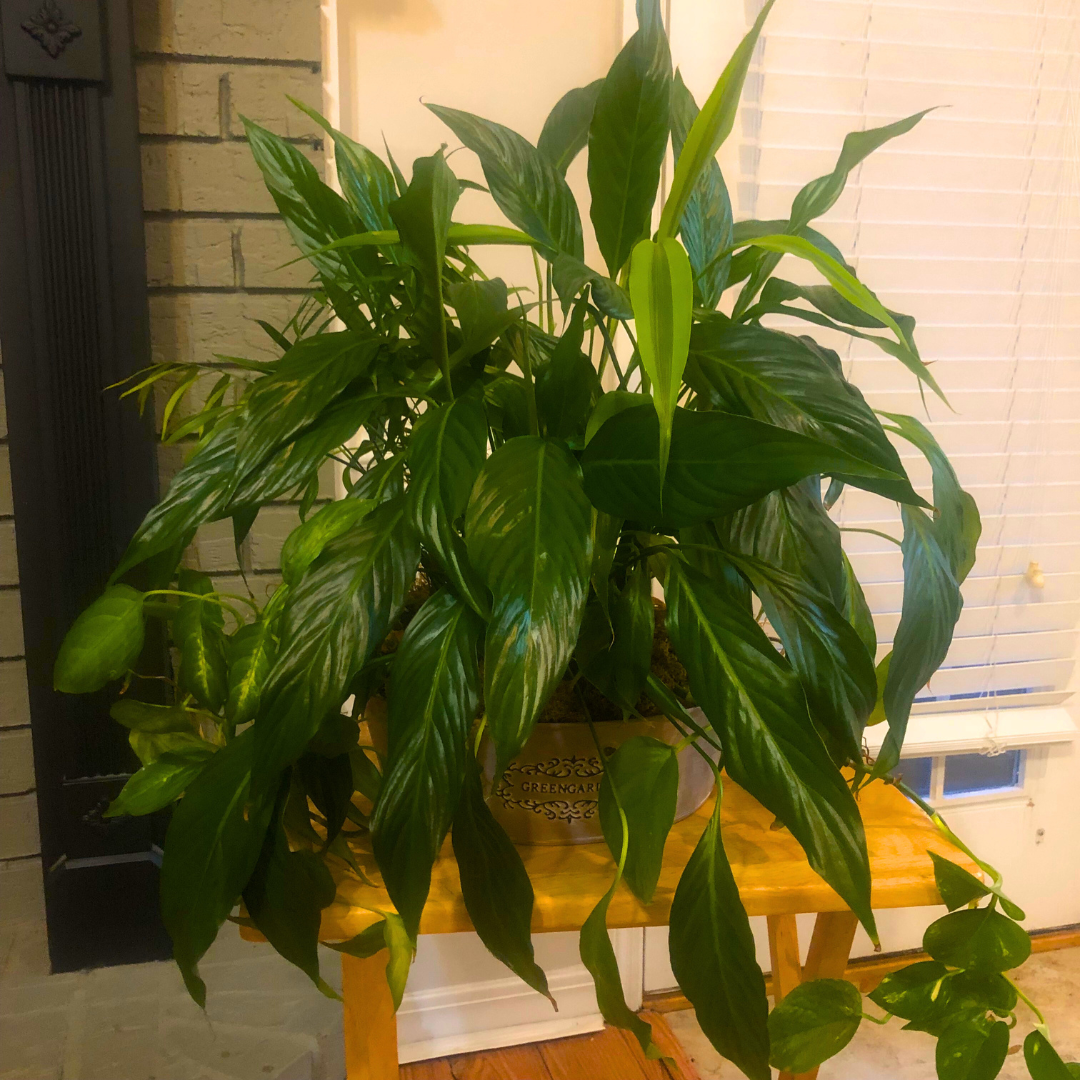
Weeding and pruning her plants inspired Tina Mayeux to discover ways to identify and root out her predominant fault.
Caring for plants is not one of my strong suits. In our home, we have exactly two houseplants, both of which are relatively low-maintenance and can survive with a minimal amount of care and watering. Even so, every few weeks I must pull off the dead leaves that result from my neglect to keep them looking healthy. Hopefully, my gardening skills will improve as my children get older, as my priorities have been feeding and nurturing the kids rather than the houseplants up to now.

Our souls can be like these neglected houseplants, with the dead leaves being our bad habits, sins, and faults. When we do not water our souls with prayer and the sacraments, we may discover more of those dead leaves of sin present in our lives.
Even more difficult to prune than the houseplants are the flower beds in our yard, continually being taken over by pesky weeds. Trying to pull these weeds out by the roots can require immense patience and strength, as they are often deep and firmly embedded in the soil. Like these roots in the flower bed, our predominant fault is often so firmly entrenched that weeding it out can be quite a challenge.
I was introduced to the concept of the predominant fault by a priest who served as my spiritual director for a time. This fault is the defect that tends to prevail over all the others and is related to our individual temperament. Often, we are not even aware of our predominant fault, which can even disguise itself as a virtue, making it an even tougher weed to identify and root out of our lives.
A predominant fault may be identified as a tendency towards pride, gluttony, anger, or another area of sin. It is not easy or pleasant to think about our failures and weaknesses; however, like trimming the leaves on the houseplants, when we get rid of the undesirable parts, our beauty becomes apparent.
What are some ways we can identify and root out our tendencies to sin, especially our predominant fault? This is a timely question for Lent and one I had been asking myself as I prepared for Ash Wednesday and this season of penitence. Using resources from my spiritual director, I found a guide to attacking this prevailing defect and beginning the process of eliminating it. Although I am sure it will not happen overnight, I feel encouraged knowing I am identifying my weak areas and working towards conquering my tendency to sin. To determine what our predominant sin is, we should take a few steps:
Ask God for Light
Asking the Holy Spirit for wisdom and light is the first step in discovering our weaknesses and sins. It is suggested that we pray a prayer like this one:
Lord, make me know the obstacles I more or less consciously place in the way of the working of Thy grace in me. Then give me the strength to rid myself of them, and, if I am negligent in doing so, do Thou deign to free me from them, though I should suffer greatly.
This is a difficult prayer to pray for sure, but necessary to begin to pull those weeds out by the roots.

Examine your Conscience
The next step is to identify the weeds and give them a name. Before we can eliminate our faults, we must know what they are so we can counter them with opposing virtues. Through prayerful reflection and a good examination, we ask ourselves questions such as: What do I think about and desire? What do I fear? What affects my emotions and makes me happy, sad, angry, and worried? What are my temptations and sins?
Then, we sincerely try to uncover the motivation for our actions and sins. Answering these questions can help us to put a name to the particular vice we are struggling with.
Spiritual Direction and Confession
Seeking guidance from a spiritual director or confessor can shed light on what our weaknesses are and how to address and eliminate them from our lives. Of course, we bring our predominant fault and all other faults we identify to the Sacrament of Reconciliation to receive absolution and forgiveness and the grace to try and avoid these sins in the future.

Lent is a perfect time to begin the process of pruning away our sins. Just as those dry, brown leaves and stubborn weeds will return time after time, our faults may cause us to sin repeatedly, even after we have resolved to conquer these faults. When we fall, as we inevitably will, we examine our conscience, go to Confession, and start again.
Maintaining our plants and gardens can be quite a task, as is keeping our souls free from sin. The good news is that with diligent care, nurturing, and a whole lot of patience, we can learn to overcome our faults and grow in God’s grace.
Share your thoughts with the Catholic Mom community! You'll find the comment box below the author's bio and list of recommended articles.

Copyright 2024 Tina Mayeux
Images: (second from top) copyright 2024 Tina Mayeux, all rights reserved; all others Canva
About the Author

Tina Mayeux
Tina Mayeux is a wife, mother of three daughters, and lifetime Southerner. When she is not busy with her family, she writes in hopes of helping to share the joy of the gospel and Jesus Christ with others. She has contributed to Catholic Digest, Patheos, and The Real Deal of Parenting, and blogs on Substack. Follow her on Instagram @wayofthewildflowers.


.png?width=1806&height=731&name=CatholicMom_hcfm_logo1_pos_871c_2728c%20(002).png)
Comments